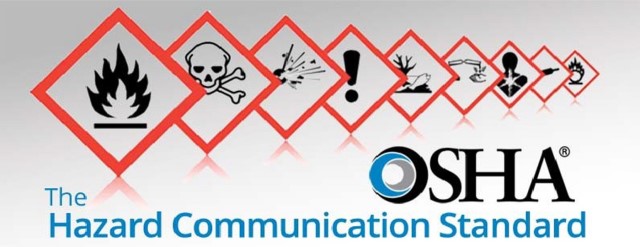Worldwide, there’s this thing called the Global Harmonization System (GHS). Its goal is to make sure every country uses similar rules for classifying and labeling chemicals. This whole fancy setup is supposed to make handling these dangerous chemicals a lot safer everywhere on Earth.
Now, getting your head around GHS can seem scary – but don’t sweat it! OSHA’s got some handy Hazard Communication Standards that act as our guidebook here. Read along with us; we’ll help you figure out how to work through all of its ins and outs safely.
Understanding the Global Harmonization System (GHS)
The Global Harmonization System (GHS) is like the boss of chemical systems. It unifies how we classify, label, and understand safety data sheets for chemicals everywhere in the world—created by no one less than our friends at the United Nations!
Goodbye to different hazard systems causing chaos globally—we’re talking about a single system now that’s easy to use anywhere you go. This helps everyone get what these slick substances can do (the good and bad), smooth out regulations worldwide, and even makes trading easier between countries.
OSHA’s Role in Implementing GHS
Meet OSHA, the key player bringing GHS into action in America. They’ve jazzed up their Hazard Communication Standard (HCS) to match with GHS, making things a whole lot easier for employers and helping us understand work hazards better.
The objective is to make sure workers are safer! How do we get there? By turning cumbersome chemical safety info into easy-to-digest knowledge tidbits.
How OSHA’s Hazard Communication Standard Aligns With GHS
OSHA’s Hazard Communication Standard (HCS) just got a bit of a makeover to align closer with GHS. Now, it uses the same playbook as GHS for sorting out health and physical dangers, along with packaging all this hazard info in labels and safety data sheets that actually make sense!
These tweaks mean employers can keep their workplaces safer. This ensures everyone on the team knows how to deal smartly with any nasty chemical surprises they might bump into at work.
Navigating GHS: Key Steps for Employers
Employers need to follow a few key steps when dealing with GHS. First, they must figure out what chemical nasties are lurking around their workplace and categorize them accordingly. Once that’s done, it’s time to share the lowdown on safety using labels stuck onto containers and handy Safety Data Sheets (SDSs).
Regular workshops showing workers how to read these rainbows of information are pretty important too! Plus, employers should keep an eye peeled for any new twists in OSHA rules – just so everything stays above board according to standards.
Conclusion
So, GHS is important because it helps us be safe and communicate when dealing with chemicals worldwide. OSHA’s Hazard Communication Standard gave us a nifty roadmap to work this system out while upping safety measures and ensuring everyone follows the rules.
Any businesses handling hazardous stuff need to grasp these guidelines like yesterday. It’s their key to keeping workers (and our planet) in good shape!

